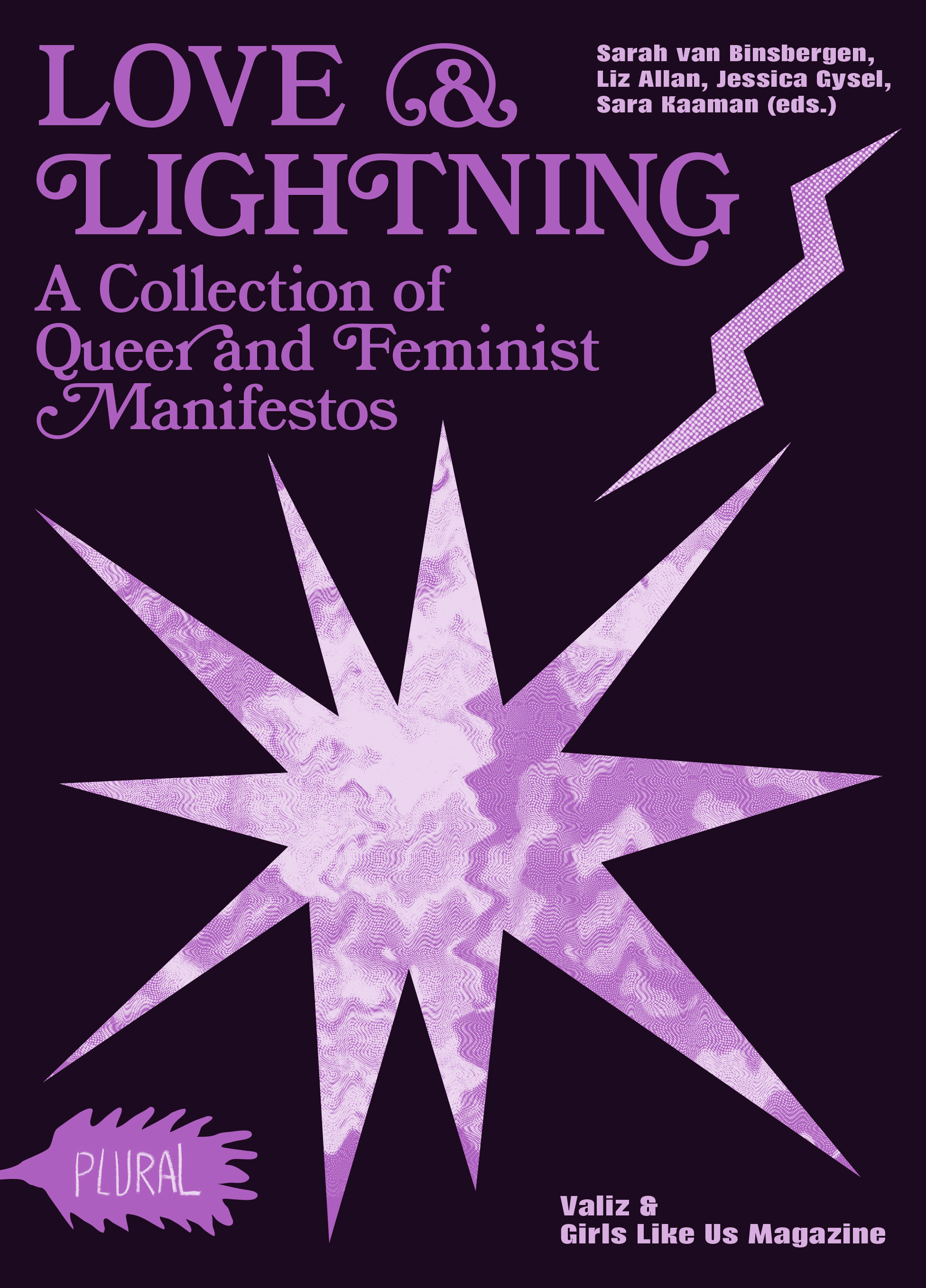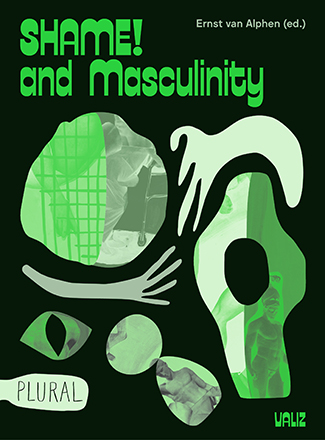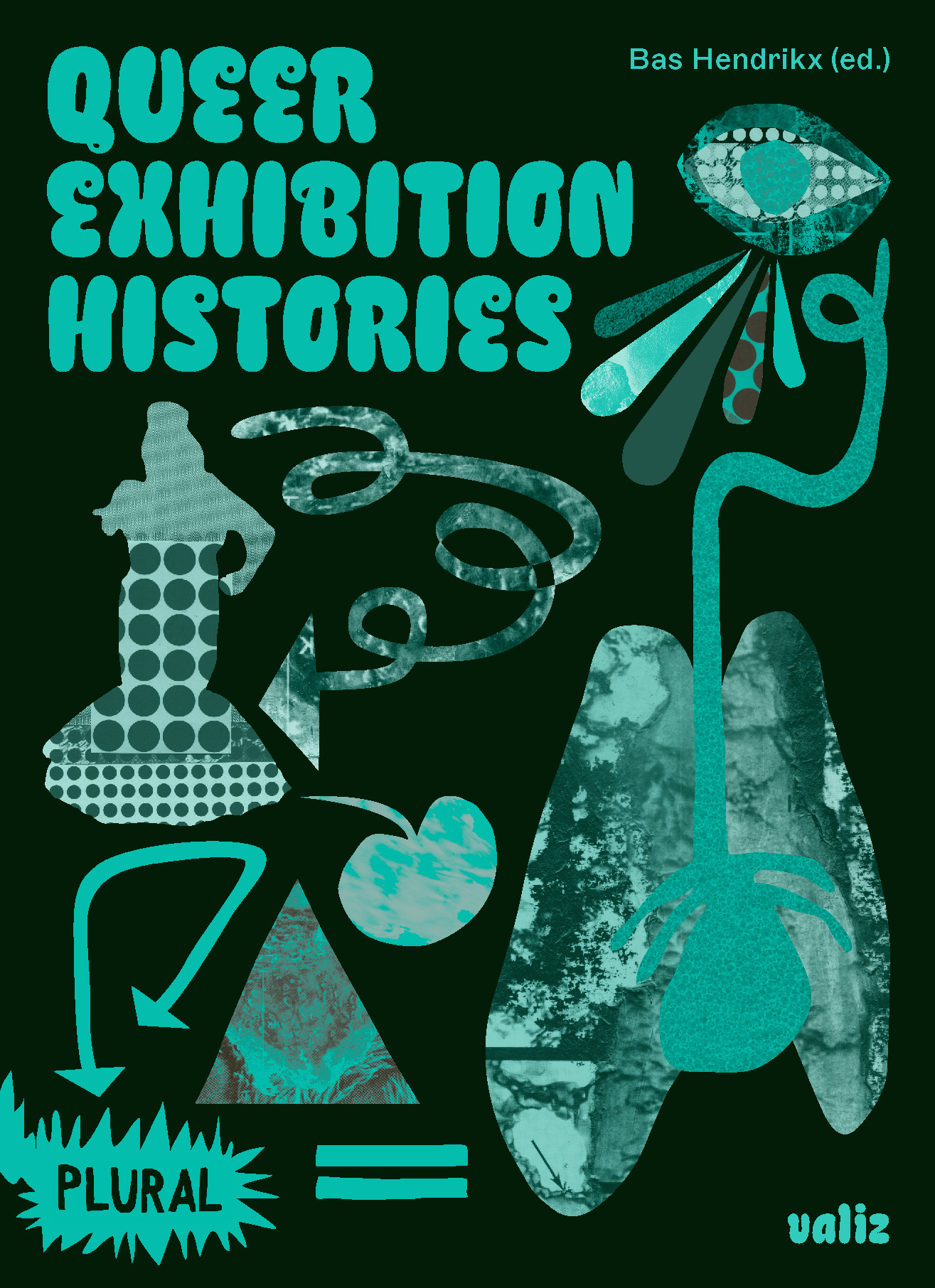Love & Lightning
A Collection of Queer and Feminist Manifestos

- Een collectie van meer dan tachtig manifesten, verdeeld over elf thematische hoofdstukken, met introducties geschreven door Sarah van Binsbergen, voortbouwend op teksten van Liz Allan
- Met manifesten van het hier en nu tot plekken buiten de ruimte en tijd zoals wij die kennen!
- Solidariteit, verbeelding en verandering
Redactie: Sarah van Binsbergen, Liz Allan, Jessica Gysel, Sara Kaaman
Bijdragen: Ain’t I a Woman van Soujourner Truth; Work Will Not Save Us: An Asian American Crip Manifesto; Rest is Resistance van Tricia Hersey; The Manukan Declaration van the Indigenous Women’s Biodiversity Network; W.I.T.C.H. Manifesto; Fag Hags Fight Back!!!; Manifesto for Maintenance Art van Mierle Laderman-Ukeles; Dyke Manifesto van the Lesbian Avengers; Killjoy Manifesto van Sara Ahmed; Xenofeminism: A Politics for Alienation van Laboria Cuboniks; The Empire Strikes Back: A Posttransexual Manifesto van Sandy Stone; Refugia! Manifesto for Becoming Autonomous Zones van subRosa; Countersexual Manifesto van Paul B. Preciado; en veel, veel meer.
Partner: Girls Like Us Magazine
Ontwerp: Lotte Lara Schröder
Serie: PLURAL
September 2025, Valiz | PLURAL-serie | 480 blz | pb | Engels | 23 x 17 cm (h x b) | ISBN 978-94-93246-47-8 | € 29,90
Love & Lightning: A Collection of Queer and Feminist Manifestos is a thematically ordered, inconclusive collection of queer, feminist and queer-feminist manifestos. Girls Like Us Magazine and author Sarah van Binsbergen have composed a publication showcasing the different forms a manifesto might have, from classical, activist formats to more poetic, associative texts. The manifestos highlighted in this book cross borders, forms and disciplines, refuse binary logics, transcend our concepts of time and space and surpass the neoliberal logic.
Love & Lightning does not claim to be a complete anthology, but it rather aims to show the myriad of ways manifestos can be composed, and what their legacy until this day is. It presents manifestos from 1851 until now, divided into eleven chapters, introduced in their socio-historical and geographical contexts, with many from Asia, Africa, Latin-America. Not only does this publication give new insight in the style of the manifesto, it aims to emancipate the reader to propose their own revolution, whether big or small.













